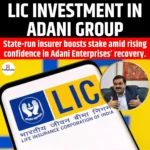| GS Paper 3: Science and Technology, Nuclear Technology |
Introduction
- As the world faces increasing urgency to decarbonize energy systems and lower greenhouse gas emissions, nuclear power is once again being viewed as a vital part of the solution.
- Traditional nuclear power plants are large and expensive, but Small Modular Nuclear Reactors (SMRs) are emerging as a promising alternative.
- These smaller reactors offer the potential to provide safe, scalable, and sustainable energy to meet global needs.
What are Small Modular Reactors (SMRs)?
- Small Modular Reactors (SMRs) are nuclear reactors designed to produce relatively small amounts of electricity, typically up to 300 MW per unit.
- In contrast to large nuclear reactors, which can generate over 1,000 MW, SMRs are more compact, allowing for modular deployment, increased safety, and shorter construction times.
- SMRs operate similarly to traditional nuclear reactors, using nuclear fission to create heat, which then produces steam that powers turbines to generate electricity.
- Characteristics of SMRs:
- Modularity: SMRs are built in modules at factories and transported to the installation site, reducing both on-site construction time and costs.
- Scalability: Their modular design allows for easy scaling to meet increasing energy demand.
- Safety Enhancements: Many SMR designs feature passive safety systems that reduce the need for human intervention during emergencies.
- Lower Capital Costs: Smaller reactors require lower upfront investments, making them an attractive option for regions with limited financial resources.
Types of SMRs
- Pressurized Water Reactors (PWRs): Most SMRs use this technology, where water acts as both a coolant and moderator.
- Fast Neutron Reactors: These reactors use fast neutrons and liquid metal coolants to increase fuel efficiency.
- Molten Salt Reactors (MSRs): MSRs use liquid fuel dissolved in molten salt, providing safety advantages by lowering the risk of meltdown.
- High-Temperature Gas-Cooled Reactors (HTGRs): These reactors use helium as a coolant and can operate at higher temperatures, improving efficiency.
Benefits of SMRs
- Safety:
- SMRs are designed with advanced safety features to lower accident risks.
- Many designs use passive safety systems that automatically shut down the reactor without human intervention if safety parameters are exceeded.
- Cost-Effectiveness:
- Unlike traditional nuclear plants, which are capital-intensive and often experience construction delays, SMRs are more affordable.
- Their modular design allows for factory manufacturing and on-site assembly, reducing costs and construction timelines.
- Scalability & Flexibility:
- SMRs offer scalability, enabling utilities to install a single reactor to meet current demand and add more modules as demand grows.
- This makes SMRs ideal for smaller grids or regions with fluctuating energy needs.
- Lower Environmental Impact:
- Nuclear power is already low-carbon, but SMRs provide additional environmental advantages:
- Reduced Waste Generation: Some advanced SMRs can reuse spent fuel, decreasing radioactive waste.
- Small Physical Footprint: SMRs take up less land than traditional nuclear plants, making them suitable for remote or space-constrained areas.
- Nuclear power is already low-carbon, but SMRs provide additional environmental advantages:
Challenges Facing SMR Deployment
- Regulatory Hurdles:
- The nuclear industry is highly regulated, posing challenges for SMRs. Existing regulations are tailored to large reactors, and SMRs need updated frameworks to account for their smaller size and safety features.
- Public Perception:
- Public perception of nuclear energy remains negative due to past disasters like Chernobyl and Fukushima. Gaining public trust and addressing safety concerns will be essential for the widespread adoption of SMRs.
- High Initial Costs:
- Although SMRs are more cost-effective than large reactors, they still have higher upfront costs compared to renewable energy sources like wind and solar. This makes securing investment difficult without clear policy support.
- Waste Disposal:
- SMRs produce less nuclear waste, but waste disposal is still a concern. A comprehensive strategy for managing nuclear waste is necessary for the sustainable operation of SMRs.
News Summary: Small Modular Reactors Gain Momentum
- India is making progress in entering the SMR manufacturing value chain, with private companies showing interest in deploying these reactors at their sites.
- SMRs, producing between 30 MWe and 300 MWe per unit, are seen as crucial for keeping nuclear energy commercially viable.
- India is positioning itself as a leader in SMRs as part of its clean energy transition and foreign policy efforts.
- Russia, a key SMR player along with China, is exploring nuclear cooperation with India in this field.
- Technical discussions are ongoing to assess the feasibility of SMRs in India, guided by the Atomic Energy Act of 1962. The Indian government is also considering involving the private sector in this initiative.
- Globally, only two SMRs are operational—Akademik Lomonosov in Russia and HTR-PM in China.
- India aims to become a credible alternative by leveraging its experience with small reactors and cost-efficient nuclear manufacturing.
Steps Taken by the Government to Promote SMRs
- Integration of SMRs into National Energy Plans: The Indian government has included nuclear energy, particularly SMRs, as part of its clean energy strategy, incorporating it into discussions on future energy policies.
- Long-term Strategy for Net-Zero: India’s net-zero target by 2070 includes nuclear power, with SMRs seen as a clean and safe option for decentralized energy production.
- Budget Allocations for Nuclear R&D: The Indian government has allocated funds to boost nuclear research, particularly in advanced reactor technologies like SMRs.
- In the 2024-25 budget, plans were announced to partner with the private sector to develop and establish “Bharat Small Reactors,” essentially SMRs.
Explore our Books: https://apnipathshala.com/product-category/books/
Explore Our test Series: https://tests.apnipathshala.com/









